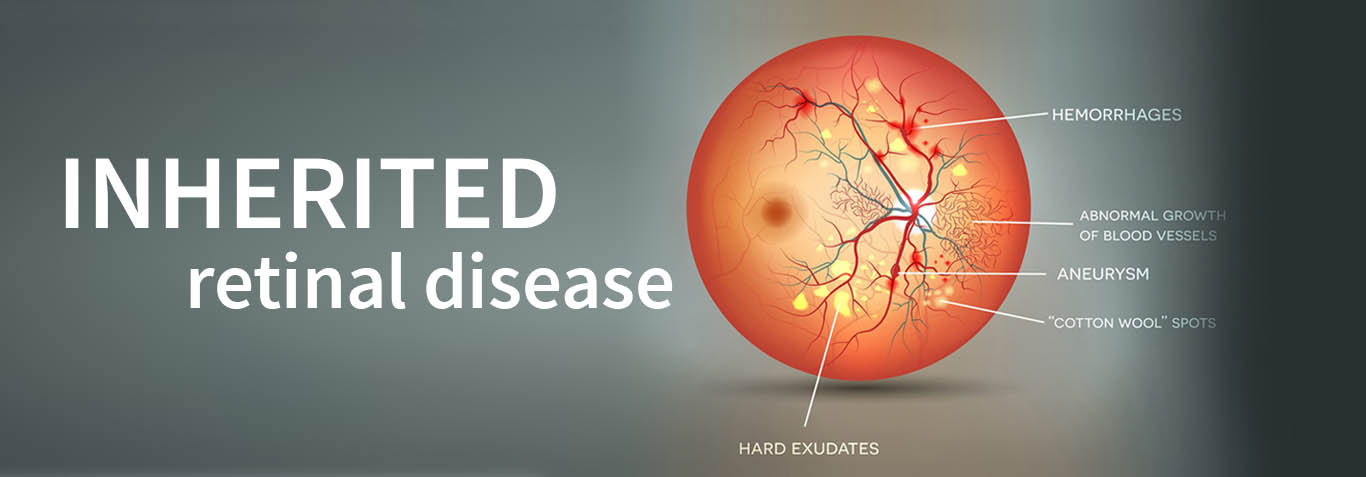If you have come to know that you have IRD or you are here because you are worried for someone in your family. It is very normal to be frightened if someone in family has been detected with this condition as it raises doubts about your own affinity to get this disease. This article is meant to answer all your raging doubts and queries.
Though most of these diseases become prominent in the affected person by the end of childhood or the onset of puberty but some of them travel undetected and only show up in the adulthood. Some common IRDs are Leber Congenital Amaurosis (LCA), Cone-rod Dystrophy (CRD), Stargardt Disease, Choroideremia, and Retinitis Pigmentosa (RP).
What are Inherited Retinal Diseases?
As they go by the name, IRDs are diseases that result from anomaly in our DNA. DNAs are hereditary information acquired by a child from its parents. Our retina is made of numerous cells just like our body. These cells in turn are built on the information carried by the genes. Think of it like your cells are like your house and the genes are like the blueprint on which the house is designed and built.
If there is a mistake in a gene or the blueprint, then the cells will be built incorrectly and the retina which is made of millions of cells will in turn degenerate and cause vision loss. The task of your doctor is to identify the specific type of gene that has caused IRD. There are 260 variants that can cause IRD and genetic testing is now available to identify most of them.
How can one acquire IRDs?
IRDs are normally acquired from parents but it is not necessary for your parents to have IRDs themselves at the first place. It is very hard to tell who will acquire IRD as it can only be back-tracked. Which means doctors can tell why one has acquired IRD but it is very difficult to say who will acquire it. Prevention becomes nearly impossible because of this reason. Returning to the question – How can one acquire this condition?
The anomaly in the DNA can be contributed by the genes of one parent, both the parents or can occur spontaneously.
Autosomal dominant: In this case the affected person receives one copy of IRD causing gene from one parent and a normal gene from the other parent. In this case it can be prevented as the dominant IRD causing gene is received from a parent who already has IRD.
Autosomal recessive: In this case the detection is difficult as both parents showing no traits of IRDs themselves are passing genes that carry the two recessive variant genes of IRD. Both the parents are carriers who have one variant copy of the gene and one normal copy of the gene.
X-linked disorders: This disorder primarily causes blindness in male children while females become the carrier. Like any other X linked disorder the genetic variant causing the disease is located on the X chromosome.
Mitochondrial inheritance: Mitochondria are responsible for making energy and the disorder makes the mitochondria so weak that it cannot efficiently produce energy for the cell. Improper cell functionality because of lack of energy results in disorders in multiple organs including the retina. It has been observed that mitochondrial inheritance patterns are passed on from mother to child. Th disorder can emerge at almost any age including adulthood.
How to counter IRDs?
Doctors might look for family history, patient history; go for clinical eye examinations like visual acuity test, slit lamp test, indirect ophthalmoscopy; retinal imaging through a bunch of non-invasive tests and procedures like Optical Coherence Tomography (OCT), Fundus auto-fluorescence, Infrared auto fluorescence, Visual Field Testing, Electro-retinography; and even Genetic testing. But this is only the first step.
Neuroprotective Agents: In many cases IRDs are progressive, which means that the IRDs are causing progressive cell deaths. Using neuroprotective agents can halt the death of cells in the retina of the eye. The treatment is designed to slow down the degeneration of cones and rods cells, the light sensitive cells in the eye.
Gene Therapy: In this treatment a vector is used to replace the faulty gene with a healthy gene. The vector is a harmless virus carrying the DNA of healthy retinal cell and affecting the anomalous ones in IRD affected retina. Gene therapy has the potential to stop, cure disease, or improve your body’s ability to fight a disease.
Retinal Prosthetic: Modern science is a boon to the world. Retinal prosthetics are the unimaginable feats attained by science. These are small devices that are fitted inside eyes on retina. They do the work of retina by becoming the retina. They process the information in terms of images and send signals to the brain just the way a normal retina does.
Conclusion – Most IRDs are hard to prevent but its progression can be slowed and stopped in some cases. Early detection at the onset of the IRD is the only way to halt its progression at a point when the quality of life can be restored.


